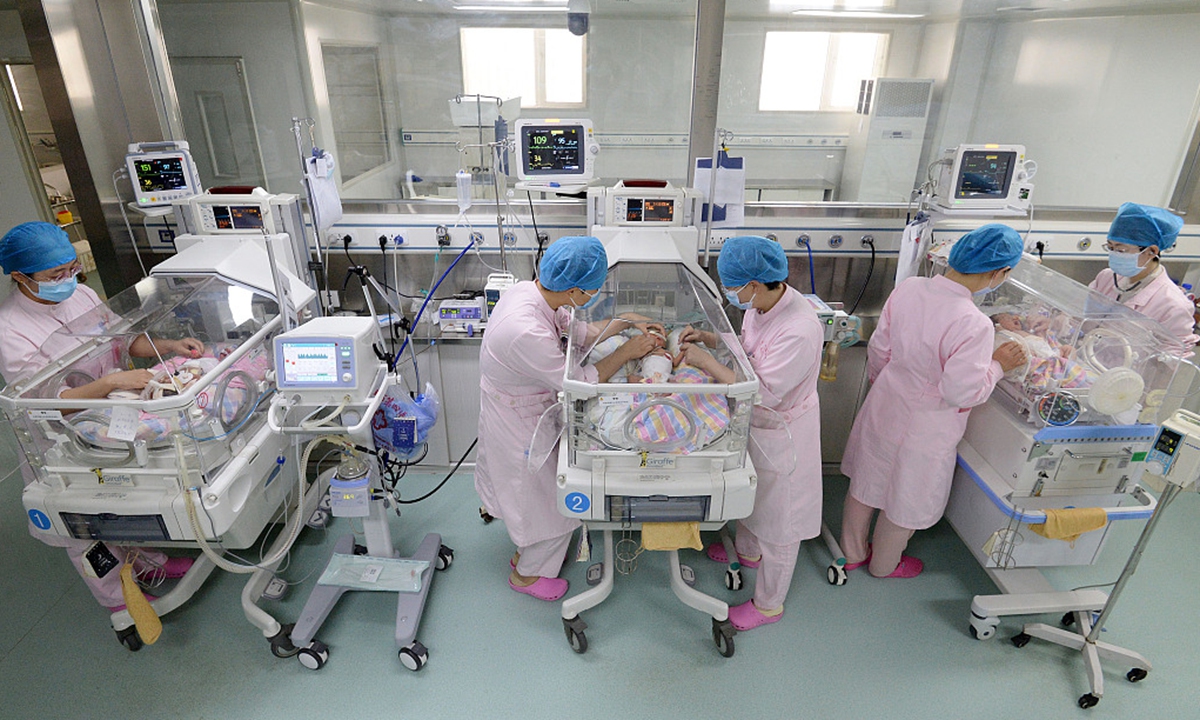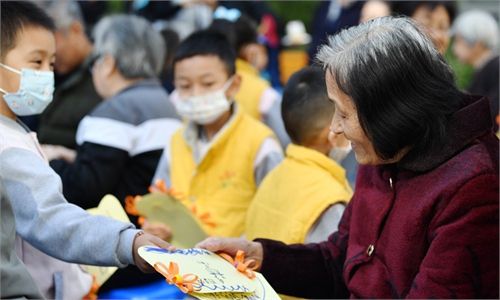17 Chinese govt departments issue guideline to boost population growth amid falling birth rate

Third-child policy Photo:VCG
A total of 17 Chinese government departments on Tuesday jointly released a guideline on support policies in finance, tax, housing, employment, education and other fields to create a fertility-friendly society and encourage families to have more children, as the country faces growing pressure from falling birth rates.
Analysts said that it is rare to see so many ministries and departments jointly release such a detailed and comprehensive guideline on encouraging fertility and supporting childbearing, underscoring the seriousness of the growth rate of China's population, which has slowed significantly, with a contraction expected before 2025.
Tuesday's guideline was released to implement policies to support each couple to have a third child, push the government, institutions and individuals to fulfill their responsibilities in creating a friendly environment for marriage and fertility, and promote population growth, according to the guideline.
Detailed support policies listed in the guideline included promoting prenatal and postnatal care, further developing nursing systems, improving the mechanism for maternity leave and insurance, offering preferential house-purchase policies to families with more than one child, adding high-quality education resources, creating a fertility-friendly employment environment, and setting up a complete service system on population.
The guideline also pointed to prevention of unwanted pregnancies and a decrease in non-medical abortions.
After further lifting the family planning policy to allow each couple to have up to three children, China is working to further create a fertility-friendly environment and the support policies in the guideline showcase such a trend in China, Ma Li, former director of the China Population and Development Research Center, told the Global Times.
These policies, especially on house rentals or purchases, encouraging kindergartens with conditions to take in children from two to three years old and protecting women's employment rights, if fully implemented, will help allay concerns of some families that are planning to have more children, Ma said, noting that the guideline has not mentioned details on childbirth allowances, given the unbalanced development levels in different regions in China.
Some demographers said that fully lifting the family planning policy will not be enough to avert a fall in China's total population, and the country should come up with more measures to encourage childbirth, such as financial support for couples who choose to have more than one child.
For example, Peking University professor Liang Jianzhang suggested awarding 1 million yuan ($155,499) to each newborn, which sparked widespread discussion online. Liang said that to raise China's fertility rate to the replacement level of 2.1 from the current 1.3, China needs to spend 10 percent of its GDP to encourage births.
Many places in China have announced policies to encourage families to raise more than one child, including prolonged maternity leave, increased maternity allowances, and support for home purchases. The Longwan district in Wenzhou of East China's Zhejiang plans to offer families with a second child a 1,000 yuan monthly allowance, with 3,000 yuan for families with a third child, until the children reach 3 years old, local media reported.
The guideline, which was released by so many ministries and departments, showed that China has paid attention to the lowest birth rate in decades and is making more efforts to avert the shrinking of the newborn population, Huang Wenzheng, a demography expert and senior researcher at the Center for China and Globalization, told the Global Times.
The average number of children that Chinese women of childbearing age intend to have was 1.64 in 2021, down from 1.76 in 2017 and 1.73 in 2019. Of the 10.62 million people born in 2021, 41.4 percent were the second child and 14.5 percent were the third child or above, according to a statistical communiqué on China's health development in 2021 released by the National Health Commission on July 12.
Huang predicted that China's total population may begin to shrink earlier than previously expected, and with the decreasing willingness for marriage and fertility especially among young people, the situation may worsen.
Huang urged more strong and systemic policies, including issuing government bonds to subsidize childbearing and adjusting real estate development.
Demographers said that young people's concerns about having and raising children should be the starting point for governments to make policies on population, and stabilizing housing prices and optimizing favorable policies may help alleviate the pressure of a population decline.



